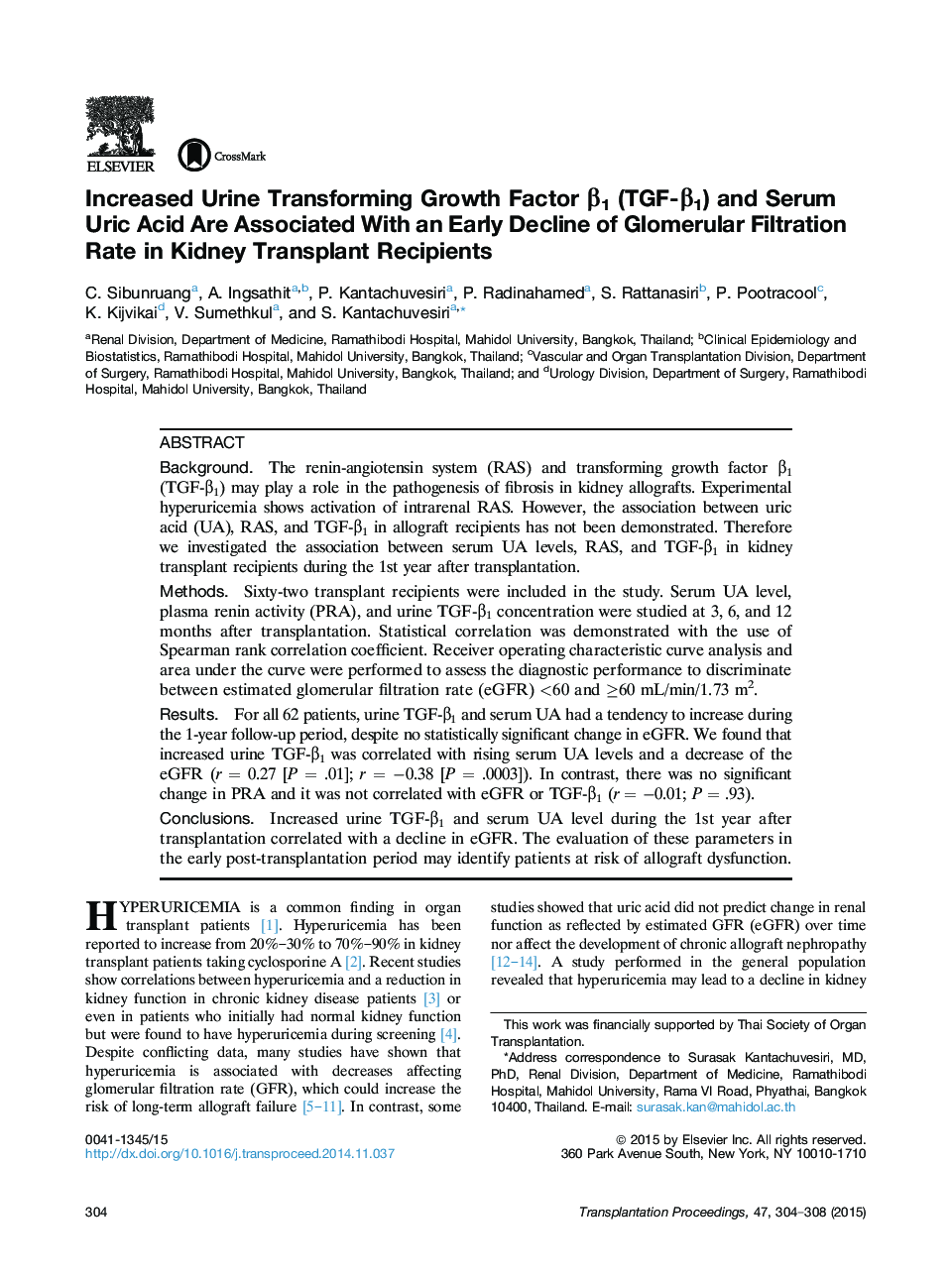| Article ID | Journal | Published Year | Pages | File Type |
|---|---|---|---|---|
| 4257599 | Transplantation Proceedings | 2015 | 5 Pages |
•This is the first study to demonstrate the importance of serum uric acid and urine TGF-β1 as early markers of kidney allograft dysfunction.•The rise of these parameters was detected before any change in serum creatinine.•These parameters can be used to identify patients who are at risk of allograft dysfunction and to help physicians make an early diagnosis leading to prompt therapeutic intervention.
BackgroundThe renin-angiotensin system (RAS) and transforming growth factor β1 (TGF-β1) may play a role in the pathogenesis of fibrosis in kidney allografts. Experimental hyperuricemia shows activation of intrarenal RAS. However, the association between uric acid (UA), RAS, and TGF-β1 in allograft recipients has not been demonstrated. Therefore we investigated the association between serum UA levels, RAS, and TGF-β1 in kidney transplant recipients during the 1st year after transplantation.MethodsSixty-two transplant recipients were included in the study. Serum UA level, plasma renin activity (PRA), and urine TGF-β1 concentration were studied at 3, 6, and 12 months after transplantation. Statistical correlation was demonstrated with the use of Spearman rank correlation coefficient. Receiver operating characteristic curve analysis and area under the curve were performed to assess the diagnostic performance to discriminate between estimated glomerular filtration rate (eGFR) <60 and ≥60 mL/min/1.73 m2.ResultsFor all 62 patients, urine TGF-β1 and serum UA had a tendency to increase during the 1-year follow-up period, despite no statistically significant change in eGFR. We found that increased urine TGF-β1 was correlated with rising serum UA levels and a decrease of the eGFR (r = 0.27 [P = .01]; r = −0.38 [P = .0003]). In contrast, there was no significant change in PRA and it was not correlated with eGFR or TGF-β1 (r = −0.01; P = .93).ConclusionsIncreased urine TGF-β1 and serum UA level during the 1st year after transplantation correlated with a decline in eGFR. The evaluation of these parameters in the early post-transplantation period may identify patients at risk of allograft dysfunction.
